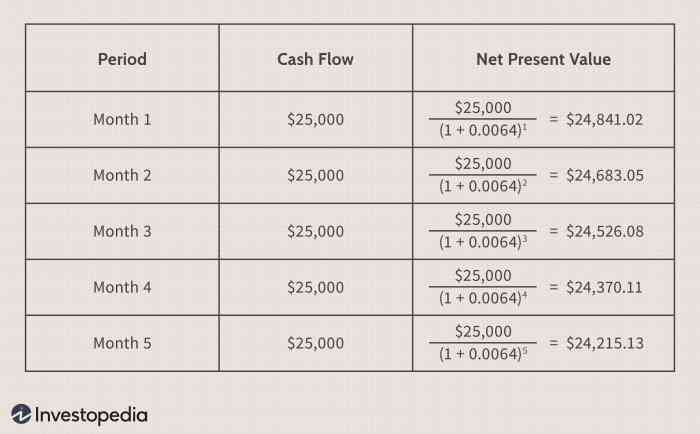When analyzing an investment project uncertain future cash flows – When analyzing an investment project, uncertain future cash flows pose a significant challenge. This article explores the complexities of predicting cash flows, the factors contributing to uncertainty, and the methods used to address it, providing invaluable insights for informed decision-making.
Uncertain cash flows introduce a level of risk that requires careful consideration. Understanding the potential impact of various scenarios is crucial for evaluating the viability and potential returns of an investment project.
1. Uncertainty in Future Cash Flows
Predicting future cash flows in investment projects is challenging due to various factors, including:
- Market volatility
- Economic fluctuations
- Technological advancements
- Regulatory changes
- Competition
Uncertainty can significantly impact the evaluation of investment projects, leading to:
- Inaccurate financial projections
- Overestimation or underestimation of project returns
- Increased risk and volatility
2. Methods for Dealing with Uncertainty: When Analyzing An Investment Project Uncertain Future Cash Flows
Several methods are used to address uncertainty in investment analysis:
- Sensitivity analysis
- Scenario analysis
- Monte Carlo simulation
- Real options analysis
- Risk management techniques
Each method has its advantages and disadvantages, depending on the project and available information.
3. Sensitivity Analysis

Sensitivity analysis assesses the impact of changes in key variables on project outcomes.
Steps:
- Identify key variables and their ranges
- Change one variable at a time while holding others constant
- Calculate the impact on project outcomes (e.g., NPV, IRR)
Software tools like Excel or specialized financial modeling software can be used for sensitivity analysis.
4. Scenario Analysis

Scenario analysis involves creating multiple scenarios based on different assumptions about future events.
Types of scenarios:
- Best-case scenario
- Worst-case scenario
- Most likely scenario
Each scenario is evaluated separately, providing a range of potential outcomes and their likelihood.
5. Monte Carlo Simulation

Monte Carlo simulation uses random sampling to generate a large number of possible outcomes.
Advantages:
- Can incorporate complex relationships between variables
- Provides a distribution of possible outcomes
- Can handle non-normal distributions
Limitations:
- Requires a large number of simulations
- Can be computationally intensive
- Relies on the accuracy of input assumptions
6. Real Options Analysis
Real options analysis values investment opportunities that have the potential for future growth or flexibility.
Types of real options:
- Option to expand
- Option to abandon
- Option to delay
Real options analysis helps quantify the value of these options and make informed decisions under uncertainty.
7. Risk Management Techniques
Risk management techniques aim to mitigate uncertainty and reduce potential losses.
Common techniques:
- Diversification
- Hedging
- Insurance
- Contingency planning
The choice of technique depends on the specific risks and project context.
8. Decision Making Under Uncertainty
Making investment decisions under uncertainty requires careful consideration.
Decision-making criteria:
- Expected value
- Certainty equivalent
- Regret theory
The appropriate criterion depends on the investor’s risk tolerance and preferences.
Question & Answer Hub
How can sensitivity analysis help in evaluating uncertain cash flows?
Sensitivity analysis allows investors to assess the impact of changes in key variables on the project’s cash flows, providing insights into the project’s resilience to different scenarios.
What is the role of Monte Carlo simulation in investment analysis?
Monte Carlo simulation uses random sampling to generate multiple possible outcomes, providing a probabilistic distribution of potential cash flows and project returns.